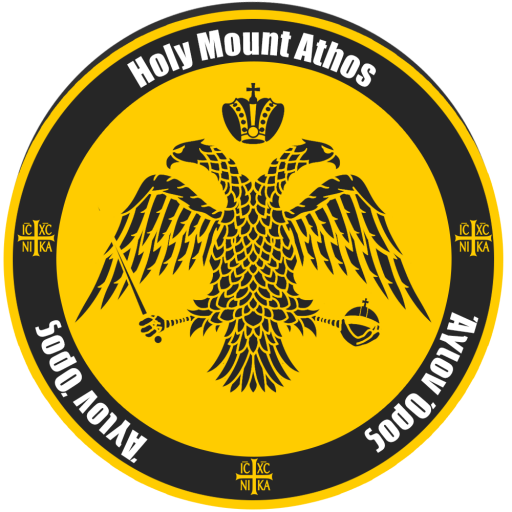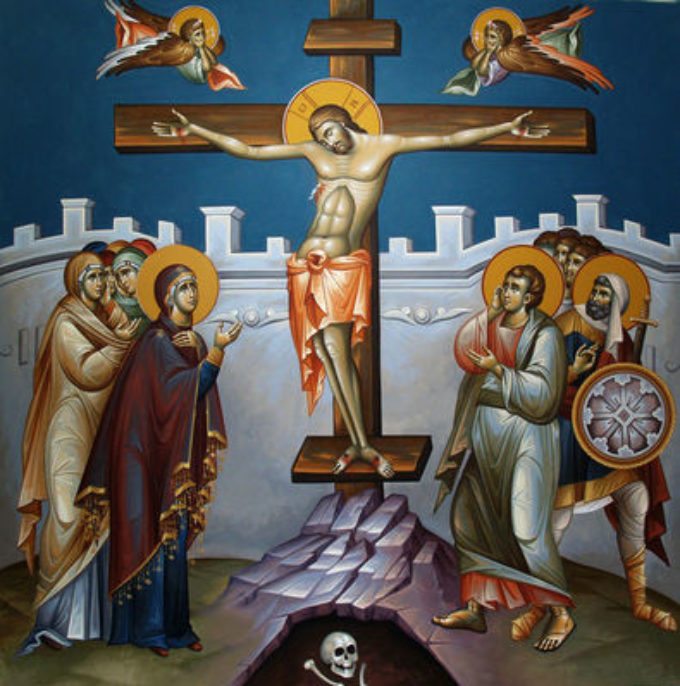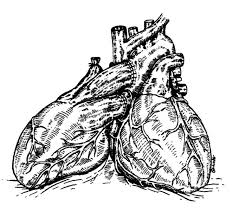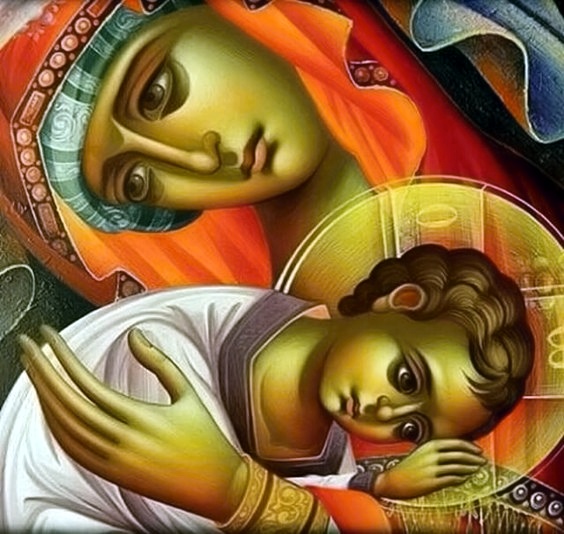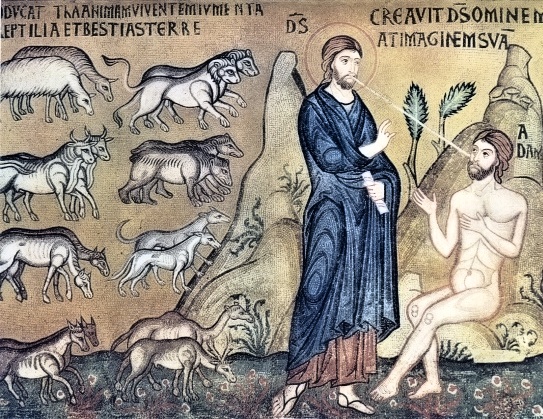Archimandrite Athanasios Mitilineos
Please understand this issue, feel it no matter how difficult it might be, cause it will take us a lot to comprehend Christ’s death and burial. It is a great theme. How Christ descended into hell. We shall see this when we’d talk about His burial.
So the Scripture says: “These things happened so that the Scripture would be fulfilled: Not one of His bones will be broken.” And another Scripture says: “They will look on the One they have pierced.”
Let’s see, my dears, these two prophecies, where the prophetic word comes to support the events indeed, to link them and give us the desired result. Do you see how soft water is? It is very soft and fluid. Do you see how soft the cement is when is powder? You blow it and it spreads away. But mix water with cement and see what happens. Then try to break it and you will see how hard it is. The events may mislead us, may be too old. Even the prophecy may mislead us and be old. But link the prophecy with the events, interconnect them and you will see if we get after that the endurance of those things. That’s why the Word of God uses the events and prophecies all the time to link the truth and present it to us. For this reason we insist to study the Word of God and the prophetic element. With the events it’s the same.
The first prophecy is taken from the Exodus. It is not a prophet’s prophecy, but rather a circumstance. We could call it an action of the Jews. It refers at the paschal lamb. In the Exodus we read on chapter 12, verse 46: “It must be eaten inside the house; don’t leave it till the next day; take none of the meat outside the house and do not break any of the bones.” It should be eaten in the same house, in every house. Each family should have had its own lamb. You should not move the lamb from a house to another. And you should not eat the meat outside the house, only in the house. And you should not break any of the bones of the lamb you slain to eat. You will not take any chopper to break them, you will take the knife and cut its neck, you will grill it, you will eat it grilled, not boiled and you should not break its bones, on any account.
And in the book Numbers, chapter 9, verse 12, it says: “They shall leave none of it until the morning, nor break any of its bones.” There will be nothing left for the next day, you shall eat all the lamb in the evening and you shall not break any of its bones.
You see, my dears, that Saint John the Evangelist tells us this to show us that it is written in the Scripture. Jesus was the prototype of that prefiguration of the paschal lamb the Jews had eaten on that night with bitter herbs before leaving Egypt, according to the commandment of God. And God told them to celebrate Passover in that way thenceforth. So Jesus was the prototype of that type and then it was necessary to be done a prototype of what it had been done before in prefiguration. What was it supposed to be done to the prototype, to Jesus Christ on the Cross? They should not break His bones. For this reason the soldiers did not break his shin bones, thing which they did to the two rogues.
But don’t think that the paschal lamb was like the lamb we eat on Easter. We prepare it as we like it, spitted, fried, grilled. We cut it as we like, we go to the butcher and buy a half or a whole one, as we please, we invite other people, we wrap it and go to eat it at a picnic. Why? It’s simple. For us this lamb doesn’t have any ceremonial meaning, because the Lamb with ceremonial meaning is Christ’s Body and Blood from the Holy Eucharist. The other lamb became a mere type/prefiguration. It is over. Its role ended. Before the coming of the prototype, the type/prefiguration had to have plenitude, exactness. What else do we see? We see that it was not eaten like ordinary meat, as I have shown it before, cause that lamb had ceremonial meaning. No stranger ate from the paschal lamb. The uncircumcised one was forbidden to eat from this lamb. It was also compulsory to be eaten in the same house, without taking it to another one.
But I’ll tell you a detail. When we have the whole Lamb, at the Divine Liturgy of the Presanctified Gifts, it is forbidden its move to another church, if it is not imperiously necessary. And this should be done with procession.
And if there was something left after the lamb was eaten during night, the leftovers had to be burnt and thrown away. And when they grilled it and ate it they were forbidden to break its bones. As you noticed from what I’ve explained, all this ceremony refers at Jesus Christ on the Cross.
Saint John the Evangelist witnessed another prophecy fulfilled. When he saw Jesus on the Cross pierced with a spear, he rememebered that is mentioned at prophet Zechariah 12, 10. “They will look on Me, whom they have pierced. The translation of the 70 ones does not say ‘pierced’, but: “They stood before Me to scoff Me.” It is obvious that for the 70 ones, when they translated, it seemed odd to pierce God. You see? It seemed odd to them. It happens the same when the French translate the works of Saint Symeon the New Theologian saying “terrible, terrible”, because Saint Symeon writes some so-called love poems. Did you pay attention? Love poems. You will get horrified too if you hear them. It is that full overflow of the saint’s soul before Christ. So when the French read his poems and wanted to translate them, they were horrified and left them. It seems that the 70 ones experienced something similar thinking: How is it possible to pierce God? But the Hebrew text preserves the meaning: Then I will pour out on the house of David and on the inhabitants of Jerusalem the spirit of Grace and of supplication so that they will look on Me whom they have pierced and they will mourn for Him.” Did you notice which is the spirit of the prophecy here? God says that over the house of David, meaning David’s kinsmen, and over all the inhabitants of Jerusalem ‘I will pour out’, meaning ‘to overflow’, ‘to spill plentifully’ spirit of Grace and of supplication so that they will look on that One whom they have pierced and they will mourn, they will suffer and repent.
